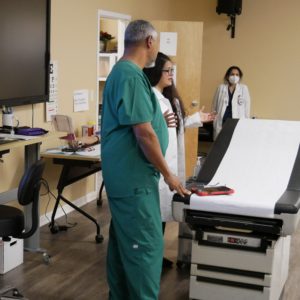Lying” is a broad category of deceptive behaviors encompassing everything from “little white lies” to criminal fraud. While society sends mixed signals about the acceptability of lying in social or business contexts, “lie-detection” remains a focus during police investigations.
Increased cortical activity (cognitive load) while lying has been detected using fMRI.1,2 But, increased cognitive load engendered when explaining a difficult truth isn’t distinguishable by fMRI from increased cognitive load due to creation and maintenance of deception3.
Lying has been associated with the behavioral “dark triad” of Machavellianism, psychopathy, & Narcissism, because those personalities use deception and manipulation to achieve their goals. However, dark triad-tendencies, alone, can’t confer success in deception. Instead, successful liars are practiced liars.4
Into this caldron of complex behaviors and social attitudes Duran and Fusaroli have released their most recent research, “Conversing with a devil’s advocate: Interpersonal coordination in deception and disagreement,” (PLOS One, June 2, 2017), a scientific evaluation of the interpersonal coordination of body language (synchronicity) during deceptive vs. non-deceptive conversations.
In their research, Duran and Fusaroli used a series of sophisticated computer-based methods for a remarkably unbiased digital analysis of audio and video recordings that were used to detect interpersonal synchronicity in speech and movement between participants involved in deceptive vs. non-deceptive conversations.5
Interpersonal synchronicity refers to entrainment of movements, breathing, turn-taking, re-use of each other’s words, and development of shared routines. These activities are known to stimulate mirror systems in the brain of the observing individual who responds with increased understanding, prosocial behavior, and tendency to like/trust the observed (mirroring) individual.6
Duran and Fusaroli analyzed interpersonal synchronicity during conversations under four conditions:
1) deceptive conversations where one party pretends agreement with a naive partner
2) deceptive conversations where one party pretends disagreement with a naive partner
3) non-deceptive conversations where one party honestly disagrees with a naive partner
4) non-deceptive conversations where one party honestly agrees with the naive partner. Statistical analyses involved multiple-regression modeling with 5-fold cross-validation procedures.
Duran and Fusaroli’s results were enlightening: Interpersonal synchronicity was greater during agreement-conversations, regardless of honesty. However, during disagreement-conversations, interpersonal synchronicity was significantly greater in dishonest conversations than in honest conversations. This suggests liars use the body language of mirroring/synchronicity for deception.5
1.Volz, K.G., Vogeley, K., Tittgemeyer, M., von Cramon, D.Y. & Sutter, M. The neural basis of deception in strategic interactions. Frontiers in Behavioral Neuroscience 9, 27 (2015).
2.Ofen, N., Whitfield-Gabrieli, S., Chai, X.J., Schwarzlose, R.F. & Gabrieli, J.D.E. Neural correlates of deception: lying about past events and personal beliefs. Social Cognitive and Affective Neuroscience 12, 116-127 (2017).
3.Burgoon, J.K. When is Deceptive Message Production More Effortful than Truth-Telling? A Baker’s Dozen of Moderators. Frontiers in Psychology 6, 1965 (2015).
4.Wright, G.R.T., Berry, C.J., Catmur, C. & Bird, G. Good Liars Are Neither ‘Dark’ Nor Self-Deceptive. PLoS ONE 10, e0127315 (2015).
5.Duran, N.D. & Fusaroli, R. Conversing with a devil’s advocate: Interpersonal coordination in deception and disagreement. PLoS ONE 12, e0178140 (2017).
6.Frith, C.D. & Singer, T. The role of social cognition in decision making. Philosophical Transactions of the Royal Society B: Biological Sciences 363, 3875-3886 (2008).



